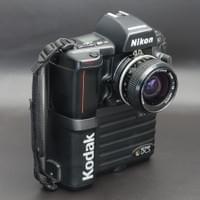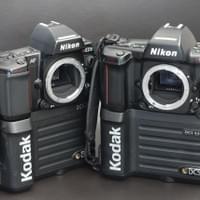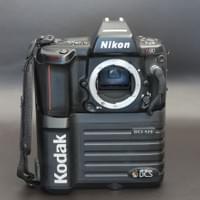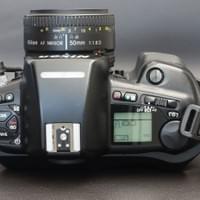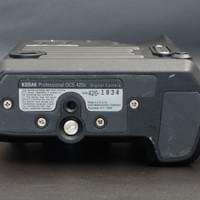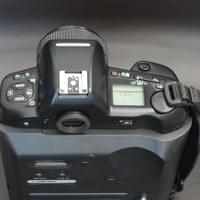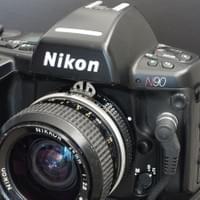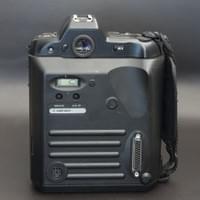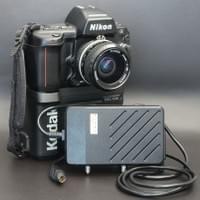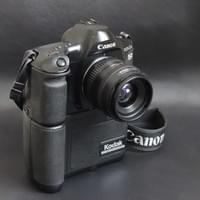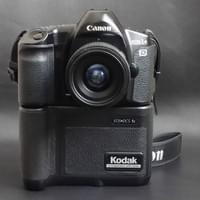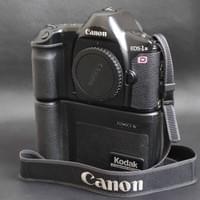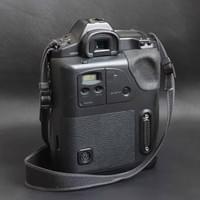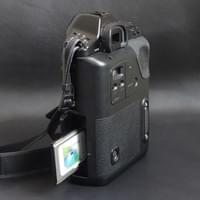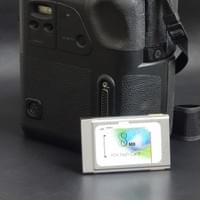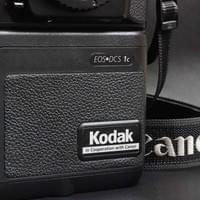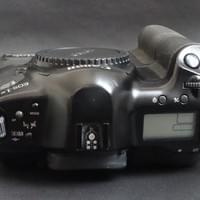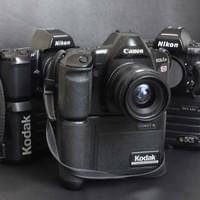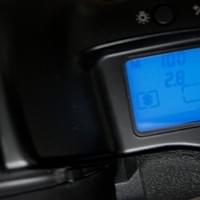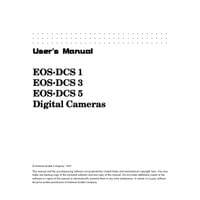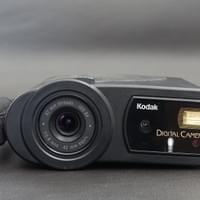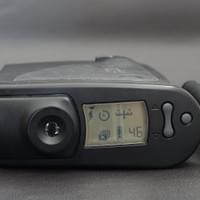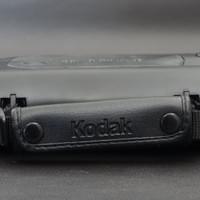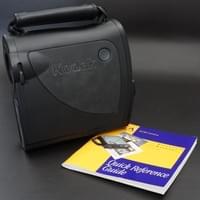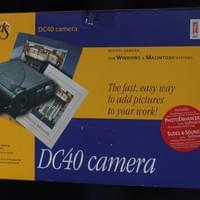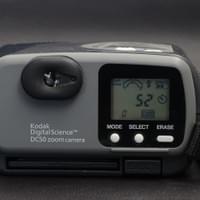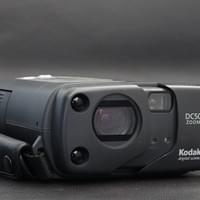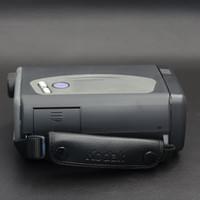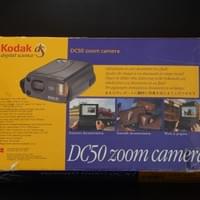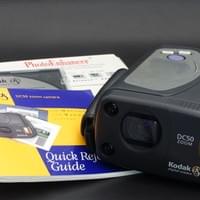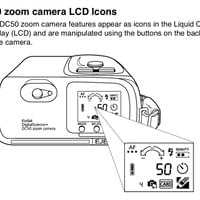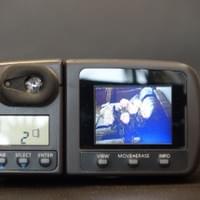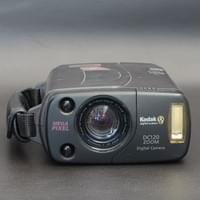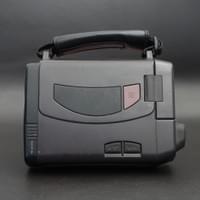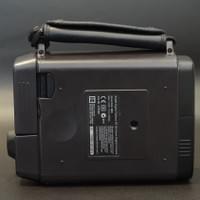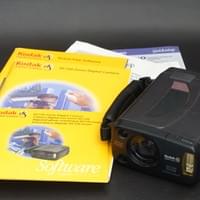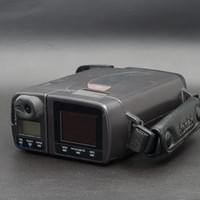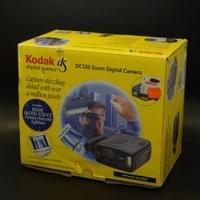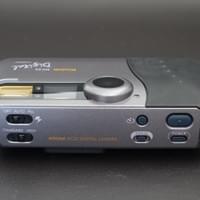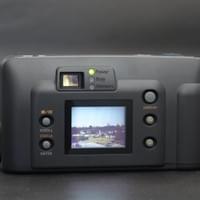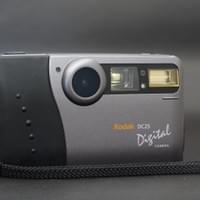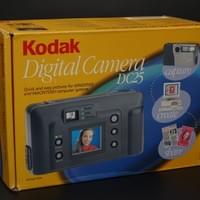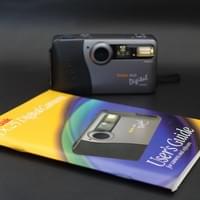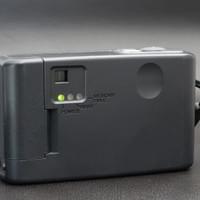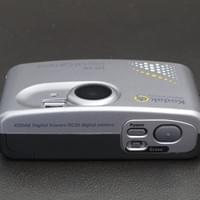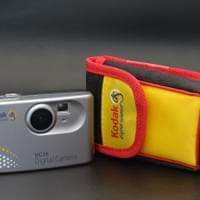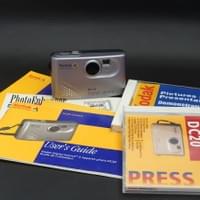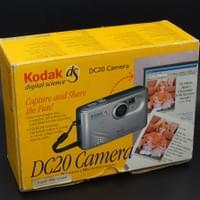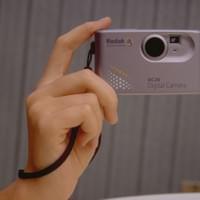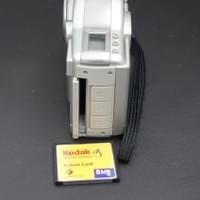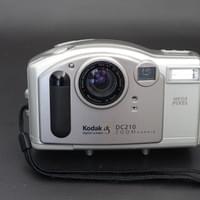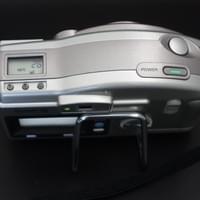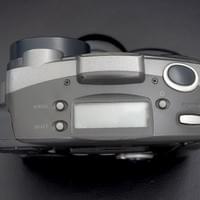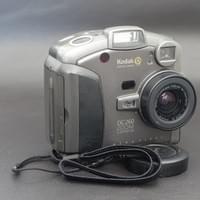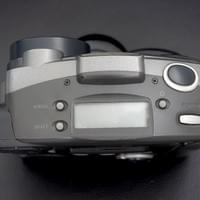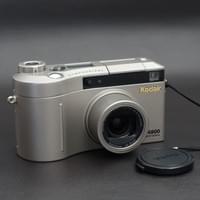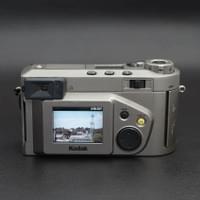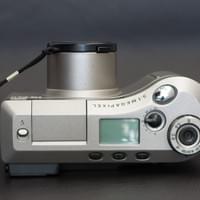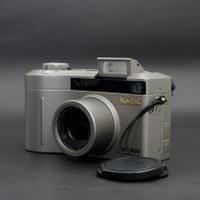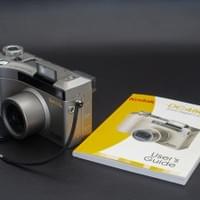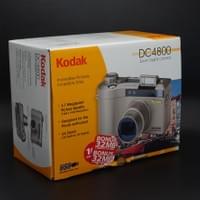
Kodak DCS 200 (1992)
Talk about significant. This is a world-first camera and a huge step towards the DSLRs of the modern era. Here's the story of how it came to be.
By 1991, Kodak had created a kind of digital camera by replacing the standard back of a film camera with a digital back containing an "imager". Connected by a cable was a separate unit containing the electronics, file storage unit and playback screen.
A year later, Kodak brought out its successor, this sensational DCS 200. It was the world’s first integrated SLR with a CCD sensor – there was no separate electronics unit. This was a huge step forward, but remember that it was still only an SLR film camera with a 1.54 megapixel imager unit screwed on. The all-up weight was 1.7kg. This list price in August 1992 in the USA was $9,995 – the equivalent of $21,000 in 2022.
My example is the 200ci version. The M5 imager unit has a colour sensor and a 2.5 inch hard drive giving 80mb of internal storage. The camera that the imager attaches to is an unmodified Nikon N8008S.
Now you know the story, I'm sure you can appreciate why my DCS 200, fully functioning and in mint condition, is a precious object indeed. And remember that only 3,240 were sold worldwide. I am enormously grateful to the New York dealer who found the M5 imager unit with all its accessories, and grateful to the photographer in Tasmania who kept the Nikon N8008S film camera in perfect condition for these nearly 30 years. In the photos, you can see the two components united.
Back to the Kodak story, the company’s lead engineer for the development of the DCS camera range in the 1990s, Jim McGarvey, makes these fascinating remarks about the project:
“The use of the familiar and respected Nikon and Canon bodies for most DCS cameras was a marketing advantage, but the Kodak name didn't appear on the "crown" of the camera . . .
“Many thought that the original DCS was a product of Nikon with some Kodak help, when in fact, Nikon was not aware of the project until it was announced.
“So, to avoid further confusion, the team decided to brand the DCS 200 with the huge Kodak logo on the grip.”
And there you see it in my photos. McGarvey's full story of the DCS camera range can be found here.
Kodak DCS 420 (1994)
Two years after the DCS 200 (above), Kodak released its successors. They were the DCS 410 and 420.
The Nikon name is still plastered on the crown of these cameras even though, again, their development was entirely the work of Kodak.
Both have a resolution of 1.5 megapixels and removable storage via a high-capacity PCMCIA card. There were mono, colour and infra-red versions.
The DCS 410 is the base model of the two. The DCS 420 is a step up and has a shooting rate up to two frames a second and internal buffer memory of 8mb. Like the DCS 200, the 410 and 420 have a digital camera-back fixed onto a standard Nikon film SLR, in this instance it's an N90. In the camera-back were the sensor, the image processing electronics and a large battery that powered all the systems of the camera. The sensor itself was small – only 13.8 x 9.2mm – so that it captured only the central area of any camera lens. The effect is to multiply the focal length of the lens by 2.6. A standard focal length lens of 50mm acts like a telephoto lens of 130mm. That rules out very wide angle photography, which news photographers love to shoot.
But it suited sports photographers who mostly shoot at a distance, and who were therefore a big target market for the DCS 420.
Photographers paid a hefty US$11,000 for their DCS 420. It’s remarkable that digital cameras soon replaced film SLRs in newspaper and magazine offices, when you consider how much costlier they were than film cameras, but the speed of downloading digital images compared with processing film images was the killer advantage. In a few years, photographers at major sporting events such as the Football World Cup were beaming their images from the field to an editing hub in the stadium, from where the best images we beamed to their news offices.
My example of the 420 is still fully operational and in mint condition after three decades. In one of my photos, you can see it looking almost identical to my DCS 200 beside it.Kodak EOS•DCS1 (1995)
In 1995, Kodak and Canon introduced this epochal digital camera.
The Kodak EOS•DCS1 was the top-of-the-range of three cameras which were the first DCS models to carry the Canon name.
Let’s go straight to the history book. Kodak’s lead engineer for the development of the DCS camera range in the 1990s, Jim McGarvey, has written in the The DCS Story published in 2004*:
“After the many Nikon-bodied DCS cameras, Canon longed to see its lens mount in front of those megapixel imagers, so they joined Kodak to help develop and market the EOS-DCS cameras, which carried the ‘in cooperation with Canon’ label. Canon provided custom firmware and interface connections in the "D" branded EOS-1N body. Canon only sold the 1 and 3 models. Over 1000 cameras were produced.” It's possible that my camera was sold by Canon rather than Kodak because the nameplate says "Canon EOS•DCS1c".
The DCS1, DCS3 and DCS5 differ principally in their sensor and therefore their image resolution. The one you see here has the largest sensor that is close to full frame. It produces 6 megapixel images, which is excellent for 1995. But the model’s inadequate computing power was was barely able to process such large amounts of data. So the ISO rating had to be fixed at only 80 (whereas the lower specification models have useable ISO ranges up to 1600). Each photo requires at minimum 1.5 seconds to process, which quickly drains the rechargeable battery and renders burst mode effectively non-existent.
In view of the fact that this camera was intended for news photographers, the slow performance must have counted against it, not to mention the 1.8kg body weight. And that’s before considering the price. When it was first introduced, the quoted price was US$28,000 – although I suspect Kodak and Canon discounted the
EOS•DCS1 for the sake of placing it into influential newspaper publishing houses.
By the way, the little c in the name of the camera indicates it took colour images. Apparently, there was also an infrared version and a monochrome version.
* My thanks to the nikonweb website for hosting this book.
Kodak DC40 (1995)
Here we have Kodak's first digital consumer camera from 1995. Of course back then, as a photographer, there was no way to scrutinise your photos in an LCD screen, either before pressing the shutter button or afterwards. It's interesting to compare this camera with the Apple Quicktake 100 of a year earlier. The Kodak is just OK to handle and operate.
The Apple is an experience.
To give Kodak its due, the DC40 had a useful 4mb of internal storage, a fast f/2.8 lens and a useful hand-grip for holding the camera snugly in the "binocular" position.
Kodak DC50 (1996)
A year after introducing the DC40, Kodak brought this look-alike onto the market. Looks can be deceiving – even though the DC50 is also a ‘binocular-style’ camera, its origins were different from those of its predecessor. The story is that Kodak’s manufacturing partner, Chinon of Japan, developed and sold a camera named the ES 300 with good success. Kodak negotiated to improve some of the technical specifications and design features of this camera, and put it on the market with its own badge. Thus the Kodak DC50 was born.
It has nice features including external storage (PCMCIA card), a 3x zoom lens, faster shutter speed (1/500 sec), exposure compensation, selectable spot focusing and an improved 0.4 megapixel colour sensor. Kodak made the user interface simple (and even cartoon-like) as the image from the manual shows.
Kodak DC120 (1996)
Take a look at the Kodak DC50 above. And now this one, the Kodak DC120 which arrived the same year (1996). They have so much in common, but the latter demonstrates how much progress was then taking place in a very short time.
The DC120 gained a colour LCD screen for viewing images. It had a 0.83 megapixel sensor and electronics which upped the photo resolution to 1.2 megapixels. It had auto focus for its 3x optical zoom lens, auto white balance, 2MB of internal memory and a Compact Flash removable card. A by-product of cramming more technology into the existing body was that the colour monitor flips up to give access to the battery compartment and memory card.
The DC120 is clearly a more sophisticated product and, at under US$900, justifiably gained a lot of public attention.
Kodak DC25 (1996)
Kodak now brought out this, second great camera with a colour LCD monitor and internal memory, allowing the photographer to check the snap as soon as it was taken. OK, the sensor of the DC25 was only 0.27 megapixels and the maximum lens aperture was f/4 but the shutter went to 1/4000 of a second and the exciting Compact Flash card made extracting the files much easier than connecting the camera to a computer. It sold for under US$600 too.
For these features, the DC25 is considered "legendary".
Kodak DC20 (1996)
What a busy year for Kodak’s digital development team.
They brought out the DC210 Zoom, the DC25, the DC50 Zoom and this one.
The manufacturing team wasn’t quite so busy, though. They arranged for Chinon to make this camera for them. In return, Chinon got the exclusive marketing rights for Japan where it sold the camera as the Chinon ES-1000.
The DC20 is about as simple a digital point-and-shoot camera as could be. There is no monitor screen or even an LCD status display. There are three little LEDs to advise the photographer of the status of the camera. There are just two buttons – one to turn the camera on/off and one to delete all images. There is no built-in flash, although Kodak sold a flash attachment for extra money.
This example of the DC20 outfit is very special. The original owner was a member of the Kodak educational team that introduced digital imaging to Australia in the 1990s. For this reason, the camera is accompanied by an original Kodak Press Kit and a digital photography demonstration CD.
Kodak DC210 (1997)
Kodak had been applying the designation "Digital Science" to its cameras from 1995. And adding "Zoom" to the model number to celebrate nothing more than 2x, which now seems laughable.The DC210 Zoom broke the 1 megapixal barrier and the 1.8" monitor was definitely useful.
This is definitely an enjoyable camera to hold and use. The controls are simple and chubby.
Kodak DC260 (1998)
One more year on (1998), and Kodak was selling a large and exciting product in the DC260. Suddenly, photo resolution was up to 1.6 megapixels, enough to produce the benchmark 8"x10" print. The colour and sharpness were excellent and zoom range was now 3x optical and 2x digital. There was multi-burst capability and even audio recording.
The appearance of the DC260 must be described as handsome.
Kodak DC4800 (2000)
Kodak shifted from the square-front shape for its consumer range of cameras (such as the DC260 above) to this conventional but charming shape of the DC4800. It's a high-quality camera with 3x optical zoom, 3.1 megapixel resolution and a solid feel.
A nice feature are the two dials that allow you to directly set the aperture and exposure compensation without resorting to the menu. Reflecting these qualities, the DC4800 came with a considerable price tag of €1,100 on its release in 2000. (The example here was kindly donated to my collection by its original owner who advises that he bought it new in Australia in April 2001 for A$1,334.)
David Leith © 2025






















